H+: The Digital Series, Warner Premiere Digital’s apocalyptic tale of computer implants in the human mind, is my recommendation this Thursday in the LA Weekly for the Best of the Web. You can read my article on the LA WEEKLY website HERE or check it out in the print edition in the FILM section.
The innovative storytelling of first-time creators John Cabrera and Cosimo De Tommaso as well as the insightful direction by Stewart Hendler on what a studio would call a shoe-string budget, was one of the main reasons I wanted to feature this piece. Cabrera and Tommaso created the world of the show back in 2006 and pursued it’s creation through years of setbacks. I think their story is inspirational for writers and exciting for those interested in creating new forms of storytelling specifically for the web. Here is my entire interview with Cosimo and John that I used as research for my LA Weekly piece.
How did you two meet and come up with the idea for H+?
C: John and I met a little over ten years ago. I used to be a dancer and was dancing in the Celine Dion show in Las Vegas. I didn’t even speak English.
J: And my sister was also a dancer who was in the show. So I visited her awesome and that’s how we met. We ended up talking about the sort of stuff we loved: TV, comedy, sci-fi, movies. We found we had a similar aesthetic when it came to storytelling, even though at that time my focus was on acting. I knew someday I wanted to transition out of acting, but I wasn’t quite at that place and he had never even thought about writing.
The partnership really came about because of this idea. We conceived of it together and then we were like, ‘You wanna try and make this?’ or ‘You wanna write this and see if someone else would be into making it?’ That was in 2006.
“This was 2006. We were conceiving of a work connected by small computers before the iphone came out. We could see it coming, but it wasn’t there yet.”
Did you conceive of the show as a web series at that time?
C: We had only created the concept.
J: We had no idea what it was going to be. All it was was an idea of a world connected by nano-computers and something goes wrong and a lot of people die. So some people didn’t die and we started brainstorming who those people might be, like people in parking lots who didn’t have reception at the time. Little by little we started creating characters, while also doing tons of research on transhumanism and technology. That’s how we stumbled across other interesting stuff like Western women using surrogates in India and China because it’s cheaper.
C: Keep in mind this was 2006. We were conceiving of a work connected by small computers before the iphone came out. We could see it coming, but it wasn’t there yet.
J: Sweeping and swiping wasn’t there yet. There were not touch interfaces. When we conceived of it, we thought it was sci-fi. Then over the years, as we developed the show, we realized… OK! Not sci-fi anymore. There was even a worry that once the thing got made it would be totally passé. I think what ended up happening was that it came out at a time that it seemed most relevant.
C: At the very beginning, I was afraid of using words like app. I thought people wouldn’t understand it. Then of course, a few years later there’s an App Store!
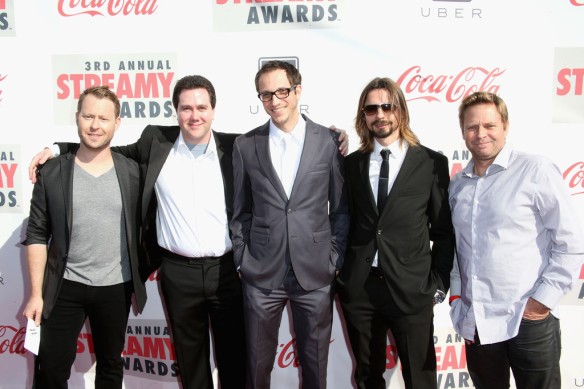
L to R: Producer Jason Taylor, Director Stewart Hendler, Writer/Creators John Cabrera & Cosimo De Tommaso, Exec Producer Lance Sloane,
How did the first show you ever pitched end up being produced by Warner Brothers?
J: We conceived of the show in 2006 and did most of the world building through 2006-2007.
C: I would dance Wednesday through Sunday in Las Vegas, the Sunday night I would drive to Los Angeles to come work with John.
J: Then we knew we had to get it in front of people. At that time, getting people interested in funding a web series wasn’t really a thing. We started off sharing it with production companies, not specifically for film or TV, just as a big budget production. We got a few meetings through friends and then we got a manager for the project who ended up staying on as my manager now for the past seven years. He started getting us more meetings. The way it works is you get one meeting, then you use that to pitch yourself for meetings with someone else. Most meetings were in the TV space. The feeling mostly was, ‘This is really amazing. But who are you?’
C: I think their exact words were, ‘This is really ambitious…’ because we had this huge concept, but we had never written anything.
J: At that time, there was only one television show that even came close to what we wanted to do: Lost. It’s like, JJ Abrams. Yeah. We’ll give him the opportunity to try something like this, but why would we ever give two completely unknown guys something this big and wild? People were intrigued and thought maybe it could be another Lost, but then later that year all these shows like Flash Forward and The Event came out.
We had a few close calls and then one day I was listening to NPR and heard this piece on UTA about how they had changed course with their online department and were really focusing on creators. They decided they weren’t interested in the YouTube flash in the pan personalities, they wanted to find people who were telling great stories. I immediately called my manager and said, I want to take a meeting with them. This could be a web series.’ So we met with UTA and they thought it was greatm but they told us that the reality at the time was, there’s no money in this space right now.
C: The difference between now and then was also that no real content was being created just for new media. The studio was thinking, let’s try with the new media. If we see people are interested, we’ll move it to television. It was kind of like a pilot.
J: UTA ended up representing us for the project, and one of the many places they sent us was Warner Brothers. Other places were asking if we could make it for $50,000 to $100,000, but Warner was looking to put real money into something like this. Not TV budget, but much bigger than anyone else was doing on the Internet. Million plus.
C: Far more than we had imagined making it for.
J: We pitched them. They loved it. They asked if we had materials. We said yes, then went home and frantically started writing up diagrams and comic book pages, getting everything together. We sent it to them and then the writers’ strike happened. We weren’t even union but the studios were being so careful that they just stopped everything.
C: I forget about that time. As soon as the good news came it’s like we forgot about the struggles.
J: Literally the DAY the writers’ strike ended, we got a call. So they had actually been waiting to move forward with this. Now of course, ‘moving forward’ on studio clock is very different than anybody else’s definition. Contract negotiations took the rest of the year. After that it was a lot of stop and go, stop and go.
C: Looking back now, it was understandable. They weren’t sure. They were putting in a lot of money and they wanted to be as safe as they could. At that time we didn’t even really know what the market was for New Media.
“One day I was listening to NPR and heard this piece on UTA about how they had changed course with their online department and were really focusing on creators.”
What did you do while you were waiting?
J: I went off and did another web series called The Homes. We did it the way that Cosimo and I were originally pitching H+, a $100,000 web series that would last 2 hours, and I almost died.
C: I was touring around the world dancing, South Korea, England, Spain. Then I went back to Europe and danced with a company in Ireland.
J: We just kept checking. We were in limbo. Then, I don’t know what happened, but in late 2010, we get this call that’s just like, “Studio’s approved it. We’re ready to go. We’re going to be shooting in Chile. I was in post production on my other show. He was in Italy. We were like, are you kidding me? Now?!
C: I was dancing and then they said, ‘You need to be in Chile in 15 days’.
How did you go about writing the script?
J: We outlined a mythology first. We created a timeline that spanned about two decades. As we go into Season Two, we’re using the same timeline
C: We had a lot of time to think about it!
J: Yeah, we had years to build it! So we had a linear, chronological timeline of events. Then we asked ourselves, what is the best way to tell this story? We always knew we wanted it to be non-linear. We knew the parking lot storyline had to have a sort of linear progression, but even in that storyline, the episodes are really independent from each other. There are several episodes that skip a huge chunk of information.
It was a studio job. All the parts of the process were exactly like a studio feature. Warner Premiere, at the time, was a division of the home video arm, which is technically the feature division of Warner Bros. So even though it was a serialized show, it was treated by WB as a film. Only difference was, we weren’t getting paid as much.
“In late 2010, we get this call that’s just like, “Studio’s approved it. We’re ready to go. We’re going to be shooting in Chile. “
What was going on at that time in New Media?
J: Back in 2006/7, when we were first talking about the story, the web was dominated by one thing: short form comedy on YouTube. If you were making a web series, you were making something that was only a few minutes long because nobody would ever watch anything more than that. There were a couple exceptions. Michael Cera’s Clark and Michael was a funny show back then, but it didn’t get nearly as many views as it should have. Then, in 2008 something very important happened that changed everything.
C: Joss Whedon’s Dr. Horrible Came out?
J: That too. But also, people don’t realize that a big consequence of the financial crisis in 2008 was that everyone started chopping their cable. That’s one of the luxuries that people cut in a bad economy. So what did people start doing? They started watching their favorite shows online on Itunes and downloading torrents.
So people went from only watching short comedy segments online to all of a sudden watching entire hour long shows on their laptops in bed, like Lost and Desperate Housewives and whatnot.
C: I remember watching Lost on ABC.com.
J: Exactly, all of the networks started showing content online, partially because they were trying to curb all of the torrent downloading. Before people told us, ‘they’ve got to be short because no one would be willing to watch something for an hour’ but when the entire world economic system collapses and you don’t have any money anymore, suddenly you are willing to sit in bed and watch four of your favorite shows back to back on a laptop.
C: If you have to decide what you want to cut, your internet or your cable… you’re gonna cut your cable.
J: This is why you’re seeing Halo 4 and House of Cards, because people are willing to sit through them. You’re even able to watch Internet content on your TV now.
“A big consequence of the financial crisis in 2008 was that everyone started chopping their cable. So what did people start doing? They started watching their favorite shows online”
How did you decide on the length of your episodes?
J: I believe web content has had a slow start because what it’s been needing is to find out what it is, independent of television. Television is already on the web, sure. But it’s so limiting to stop at, ‘well these should be little versions of TV shows that we grow until they’re big versions of TV shows.’
As soon as we started sharing it with the Internet space we started to think, what is the web version of this world. It was still the same mythology, but as soon as we thought in the terms of the web, our concept became nothing like a TV show, it became, pretty much, the storytelling format you see today. We developed the POV’s at the beginning of each episode. That was not in the TV version of it. Also the fragmented nature and how it’s told out of order. People always ask us if we’ve thought about making it into a TV show. Of course we have, but it wouldn’t look anything like it is on the web.
C: It would be a completely different experience. This version of the show would fail on TV.
J: The shortness was also due to when we started our process. In 2006/2007 people were telling us that it couldn’t be longer than three minutes because that was all that was out there.
C: When prom queen started, one of the most popular web series at that time, their episodes were a minute and a half each.
J: By the time we got to a time when it was clear we would be competing with shows that were 15 minutes long, we felt like, this show is what it is. We were definitely nervous people would complain it was too short, and the number one complaint in the comments is that it’s too short.
What was the casting process like?
C: I was in Spain at the time we were casting and would get all the videos an hour after they shot them. I was in charge of casting the couple Italian actors that we had.
J: We cast actors from all over the world. Samuel Vauramo who plays Topi was based in Finland. Hannah Herzsprung who plays Mata was based in Germany. We give huge props to Mara Casey, our casting director. She’s amazing. She used to cast Gilmore Girls and I was on Gilmore Girls, so she has been a dear friend of mine for a long time.
There was some discussion early on about subtitling vs. actors say, speaking English with an Italian accent in Italy. So much of H+ is about human connection in the digital age and how people relate to one another that we felt that language needed to be a theme.
Back when I was young, the idea of talking to someone in another country seemed really exotic and exciting, something you do if you have a pen pal. But now anyone can talk to anyone in another country just by getting on twitter. If you want to practice your language skills, you can get on Skype. That connection is such a part of what the digital age is and such a part of what our show is about that it just seemed dishonest not to use the actual language.
C: The medium was important to this decision too. If you have a show in the United States, American actor speaking Italian is fine. No one will know and when that product goes to Italy, it will be dubbed. But something like this, when this product goes to Finland, Germany, Italy, the people there will realize that it is not truthful, right? They can see that is not a real Finnish accent. So it would have seemed fake to them and that was the last thing we wanted.
How many people did you see for the role of Mata?
J: Casting Mata was a really long process. The actual nationality of that character had to change. It was originally a Finnish character. Then we realized, just because we wanted the best actress for the role, we should probably change her nationality to be sort of a mystery, so were seeing a lot of people, Swedish, German, etc. Then we found out that Hana was interested and she’s a pretty big German actress. Then something happened and she couldn’t do it so we were scrambling. It wasn’t until we were in Chile filming, still trying to cast the role, that we found out she was available. She speaks German, Italian and Finnish in the show. If you’re from Germany, you watch it and you know she’s German, and if you’re Finnish you know, that ain’t a Finnish accent. For everyone else, she’s a mystery, which works for the show.
You were casting mostly from tape. Did you actually meet the actors before you started filming?
J: Everyone we cast outside the country we didn’t meet till we were on set. Cosimo met the ones in Italy.
How do you feel about your fans making chronological playlists?
J: We love it and we’re happy to send people their way to their channels to watch them. We when we were brainstorming the web series as non-linear, we always imagined how rad it would be if people put together their own timelines. At that time, we didn’t know we would be on YouTube so we didn’t know how anyone would do it. As soon as it became clear that YouTube was going to be our distribution platform, we started exploring what that meant and we realized people could curate a playlist. You can add jump points too so you can have episodes jump to the next episode cutting the end credits and the opening titles and that will play… sort of like a TV show..
True hard core fans who have been following us since Comic Con last year will remember that our first week, our credits were a minute and a half long. Straight up film credits. On a two minute episode.
What did you learn from Season One that you are applying to Season Two?
J: The data seem to suggest that the shortness of the episodes is not hurting us below a certain point. When the episodes get close to the three minute point, that’s when we get our biggest complaints.
J: More than the actual length, it seems that the release structure was what compounded people’s frustration with the shortness of the episodes. If you’re only getting two, two-three minute episodes once per week with a story that is already so complicated, it’s hard to follow.
I think the best way to release Season Two would be a daily series. Season One had eight chapters, each with six episodes. Those could be weekly chapters. A person could watch them day-to-day, or they could wait a full week and then they’ll get a playlist to play one episode into another. That way, you could watch a twenty minute ‘episode’ at the end of the week if that’s your thing.
Why did you choose to release two episodes once a week?
The question was whether we needed a long run so we could develop our audience. You’re coming to this show after it’s completed, but there were people coming in at the 4 month mark who still got to participate in the community of people waiting to watch week to week. Had we done it in 8 weeks, everyone finding the series would have found it after the community had ended. The question for season 2 is, is that building of community as important? Probably not, which is why a daily series makes more sense for a season 2.
Would you increase the length?
We want it to stay above that critical length we spoke about earlier, but think about it. If each episode is five to six minutes long, then how many episodes can we actually do? Forty eight, five to six minute episodes is like four hours of content. And when you’re only getting a one to two million dollar budget for that?
I know there are web creators who can produce that amount of content on that budget, but when you’re creating at the studio level, you have to pay everybody a specific amount. There are unions you have to deal with. That’s something independent web creators don’t think about when they look at studio projects like ours. They say, ‘well look, they got the big money.’ But there are so many doors for a studio project that are sealed shut. The only way you can open those doors is with money. On an independent project, those doors aren’t sealed shut, they’re loose. Things like permits. Independent projects can often just shoot guerilla style. A studio has to pay.
What else is going on for you guys and what are you hoping to do in the future?
C: I’m hoping to get the opportunity to write more in the United States. I love it here. At the same time, I would also like to work in my own country as well. I’d like to do this sort of work there. People in Italy are already watching TV shows on the Internet because a lot of TV shows come out later there, so people are downloading them on torrent and watching them on their computer.
“Independent creators may say,’Well, they got the big money.’ But there are so many doors for a studio project that are sealed shut that aren’t for an indie. The only way you a studio can open those doors is with money.”
Are there a lot of web series in Italy?
There are a few, but not so much. There are a few production companies that are willing to put money down and make a few episodes, but if it goes well, then they try to move it to TV. They are not interested yet in creating something just for the Internet.
What about you John, what else is going on?
J: I’m just writing, some stuff with Cosimo as a partner and some on my own. I’m currently writing two projects for film, which is exciting, and then I have a TV show that I’m trying to sell.
What advice do you guys have for a person who wants to make a web series?
J: Being a writer is the only profession in Hollywood that does not require anyone to give you permission to do what you want to do. An actor can’t just act. They need a script and they need to be hired. A director can’t just direct. All a writer needs to do is open up a laptop and start writing. I think a lot of writers forget that. They’re thinking about getting their project made before they’ve even written their story.
Get your story out on paper. If it’s a great story, somebody will want to make it. If you can’t find anyone and it’s a great enough story, you’ll find a way. We’ve been working on this story since 2006 and we just kept fighting until we got it made.
Click HERE to go to H+: The Digital Series’ YouTube Channel. For another interview with first time creators, check out my chat with the creators of hilarious NYC web series High Maintenance about a weed delivery guy in Manhattan.
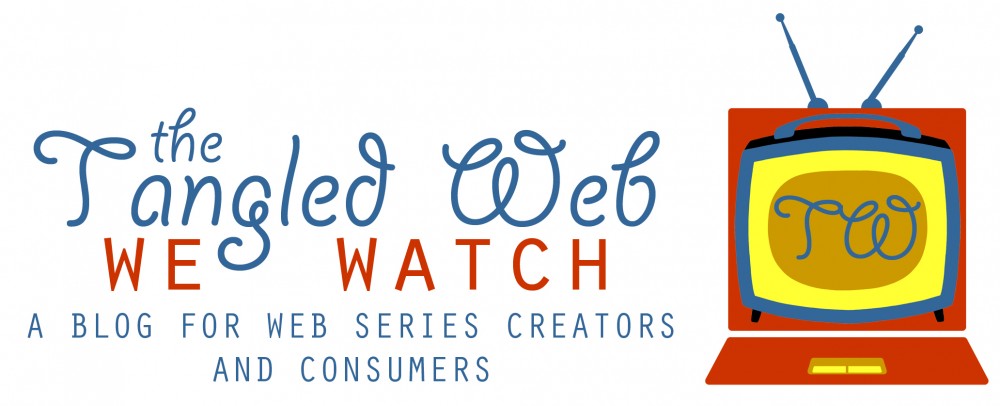

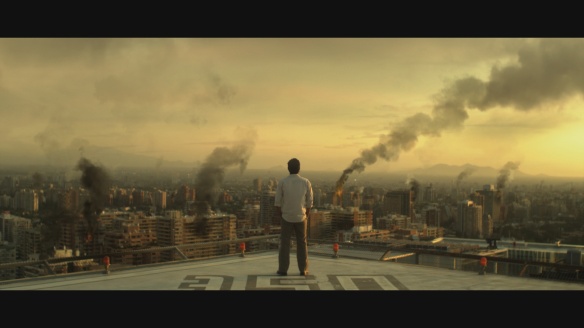
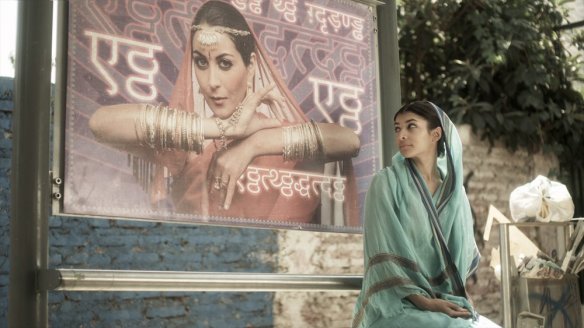
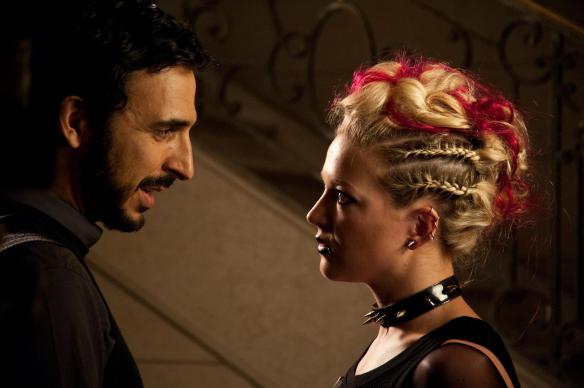
Pingback: L’actu des webséries #04 | webzeline
Pingback: Writer/Exec Producer Brian McGreevy Talks Work Ethic, Hemlock Grove and the Benefit of Being A Little Bitch in Hollywood | The Tangled Web We Watch